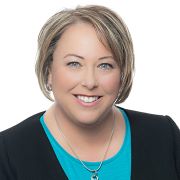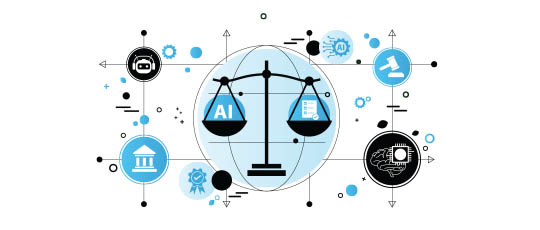For WorldatWork Members
- 2025 Priorities of Total Rewards Leaders, research
- Steps You Can Take to Deliver to the Employee Value Proposition, Workspan Daily Plus+ article
- Should Your Next Total Rewards Professional Come from Finance? Workspan Magazine article
- The Future of the Rewards Profession: Let the Sleeping Beauty Rise, Journal of Total Rewards article
For Everyone
- How Much Have Rewards Practices Changed Since 2018? Workspan Daily article
When it comes to 2025 goals, total rewards (TR) leaders are focused on modernization, transparency and employee-centric strategies. This is according to WorldatWork’s Total Rewards Leadership Priority Study.
Nearly 250 TR leaders provided key insights into what is shaping their functional strategies. When asked to identify the factors they thought would have the most impact on strategic direction this year, the aforementioned focuses bear themselves out in the emerging priorities of leadership engagement, alignment with organizational goals and market competitiveness.
Despite varied organizational characteristics, said Liz Supinski, WorldatWork’s director of research and insights, these factors were generally identified as those expected to have the most impact this year, with thriving companies focused on enhancing competitiveness and alignment, while struggling businesses expect to emphasize improving employee understanding of rewards to drive outcomes without requiring major budget increases.

Liz Supinski is the director of research and insights for WorldatWork and a Senior Certified Professional (SHRM-SCP).
“[Another] interesting aspect of the survey is the prominence of strategic benefits management, which stands out above other priorities,” said Marta Turba, WorldatWork’s vice president of content strategy. “Benefits optimization and expansion were identified as the top trend, with 36% of organizations focusing their 2025 goals in this area. There’s no doubt that the workforce benefits market is undergoing a transformational shift, driven by factors such as increased competition for talent, remote and hybrid work, and other trends.”

Marta Turba is the vice president of content strategy at WorldatWork and a former total rewards practitioner who held numerous TR and HR senior leadership roles.
Supinski noted better communication and education topped the list when TR leaders were asked to share what they’d most like to change about their organization’s approach to total rewards.
“Process improvement and integration of TR strategy with business goals rounded out the top three places on this wish list, while only 7% identified more funding as their key barrier to success,” she said.
Workspan Daily (WD) connected with Supinski and Turba to further discuss some of the findings from the study and what these results tell us about the TR profession.
WD: The report asked TR leaders what factors would have the highest organizational impact in 2025 and top goals for the year. What did the results tell you about the profession?
Supinski: One thing I found most interesting was how evenly distributed financial performance was. The distribution across the five categories was very nearly a bell curve. Among the groups whose businesses were most excelling, their top three impact factors were tied. I think there’s an implication that those businesses are excelling in part because they have strong TR practices — they’re already using data and have leaders and employees who bought into TR. They’re now looking to make next-step moves, ensuring they’re supporting organizational goals, which requires leadership support. They’re also likely to believe that additional growth requires top talent, so market competitiveness is key.
When looking at top goals for 2025, I was surprised by how many organizations were focused on building foundations — the category we defined as “Advance Total Rewards practices.” Because respondents could provide up to three goals, this was often paired with another goal, so maybe that makes more sense. For example, ‘We’re focusing on a project (tech implementation, a pay equity study, etc.) and making sure we’re doing a solid job on the basics.’ I feel like people are expressing a need to make sure that the core elements of the profession are done well while moving the practice forward in key areas. I was also surprised by how much interest there was in wellness programs. The evidence supporting them is mixed and they feel a little out of step with the current politico-social moment in many ways. I think it may be interesting to see if that interest is maintained a year from now.
Turba: [The results] tell me that, now more than ever, market agility — the ability to gauge, predict and align rewards strategies with market trends (which may also include internal influences) — is critically important. It ranks as a top priority for organizations across all business cycles, from steady state to transformative growth. This area is not only important, it is also evolving rapidly, which may be one reason for its prominence in the study. Access to big data and artificial intelligence (AI) tools is fundamentally accelerating and simplifying the process of synthesizing market indicators, shifting the role of total rewards professionals from composition and analysis to oversight and strategic decision-making.
It’s noteworthy that organizations undergoing a period of accelerated innovation are placing greater emphasis on employee understanding of rewards than organizations in other business cycles. This emphasis may be another indicator of alignment — whether in the articulation of objectives or the way rewards are structured, there is a clear connection between rewards and the desired business performance metrics.
There also seems to be a growing reliance on data-driven decision-making when tough choices need to be made. Organizations where respondents identified as “struggling” or “just getting by” are leaning into data-driven rewards practices more than others. This is, perhaps, expected — data is a key tool to guide effective problem-solving. But it’s surprising that there’s less claim of data as a key driver of success in organizations in growth and innovation mode. After all, the ability to have accelerated and accurate diagnostics of issues and opportunities could lend even more of a competitive edge to those organizations that are already thriving.
Additionally, the study highlights the evolving and strategic role of TR professionals in crafting clear, compelling messages that drive employee engagement, retention and overall business success. No longer just designers of compensation and benefits programs, they are key partners in shaping and communicating the employee value proposition (EVP) with leaders as their primary audience and key stakeholders. Notably, TR professionals in organizations of all sizes —whether 20 or 20,000 employees — cite that leadership’s ability to convey the value of total rewards is critical for impact. They are increasingly focused on equipping leaders to be proactive and visible, ensuring rewards align with business goals and clearly connect to company values and employee contributions.
WD: The report also asked total rewards leaders one thing they would like to change about their organization’s total rewards strategy. What answers stood out for you?
Supinski: The largest proportion of “change one thing” responses were around communication and education. This is consistent with results in many of our other studies — “communication and education” is the area where most organizations report falling below their expectations and/or recommended practices. It may be that leadership outside of TR does not really understand the criticality of communication and education in getting the most out of total rewards and, thus, isn’t putting enough resources toward it. It also may be that non-TR leadership is prioritizing other kinds of communication and education efforts more highly, or it may be that a culture of secrecy around compensation stifles communication and education programs. Certainly, we hear anecdotally about organizations that build technically great TR programs that fall short because employees don’t understand them and managers can’t explain them, so there is an opportunity in this area for many organizations.
WD: The report comes with a total rewards priorities quiz. How can TR leaders use this quiz as a tool to identify key development needs?
Supinski: The report and quiz can be used together to support conversations about TR priorities. After completing the quiz to anchor where their organization stands, report data can be used to contextualize the importance of upscaling practice in different areas. An individual’s organization might choose to focus on building up practices in areas that other organizations are prioritizing (like benefits), so as not to fall behind, or, alternatively, to focus on an area that others are deprioritizing (like recognition), to provide a differentiator. Of course, alignment with organizational goals also is a critical element of this prioritization. Following (or diverging) from the crowd should be done only where it makes sense.
Editor’s Note: Additional Content
For more information and resources related to this article, see the pages below, which offer quick access to all WorldatWork content on these topics:







